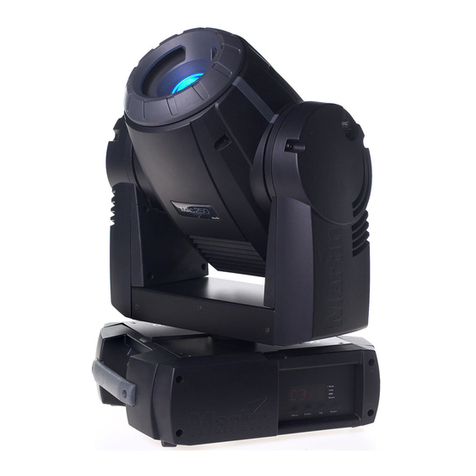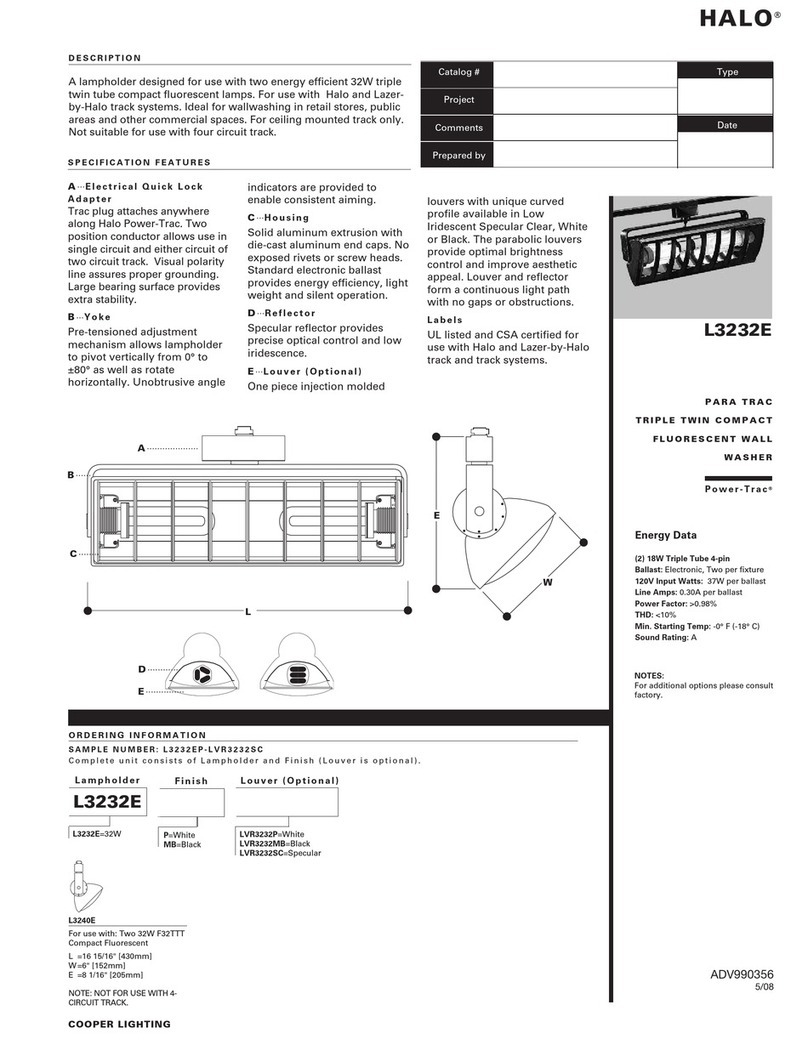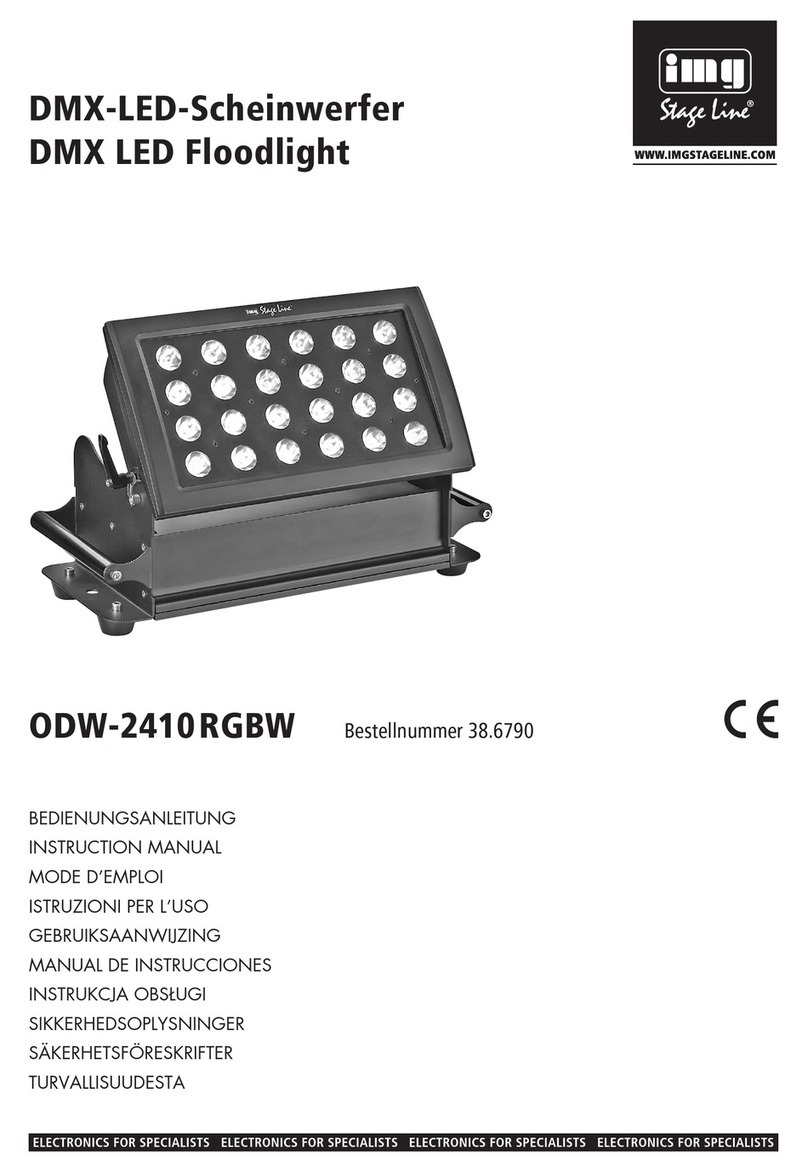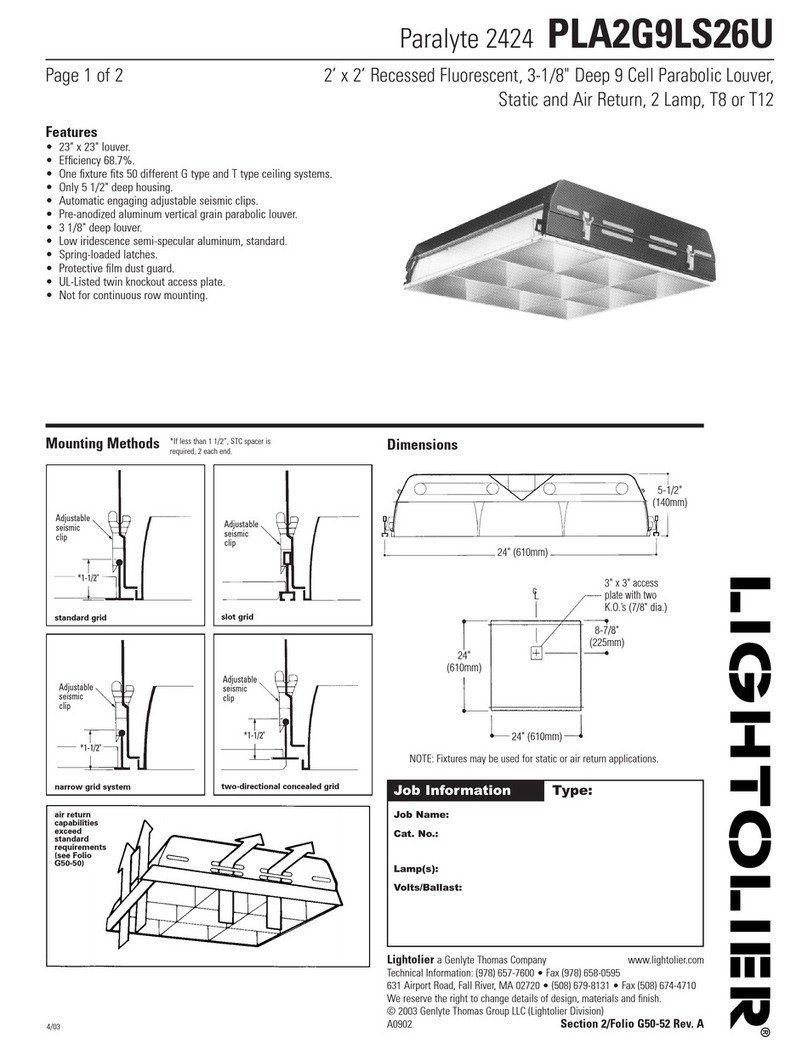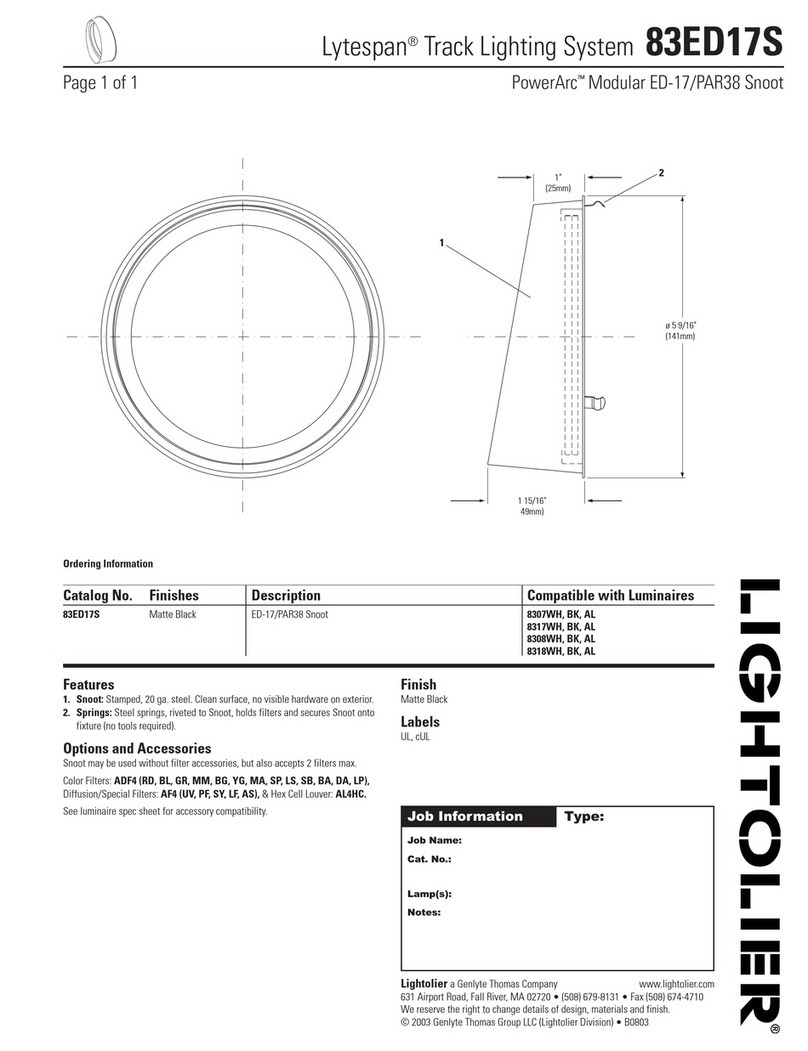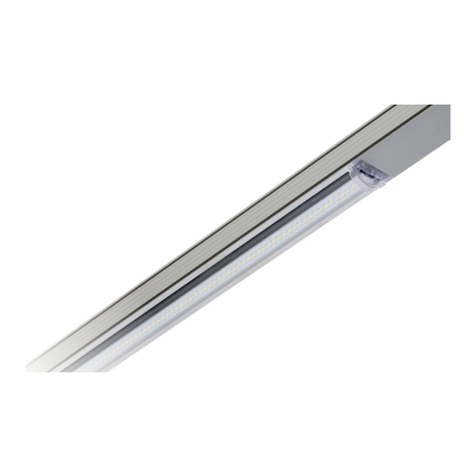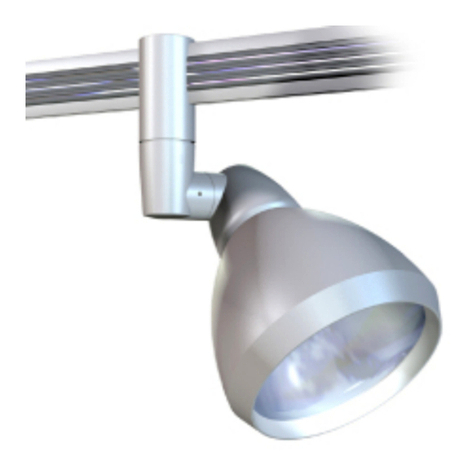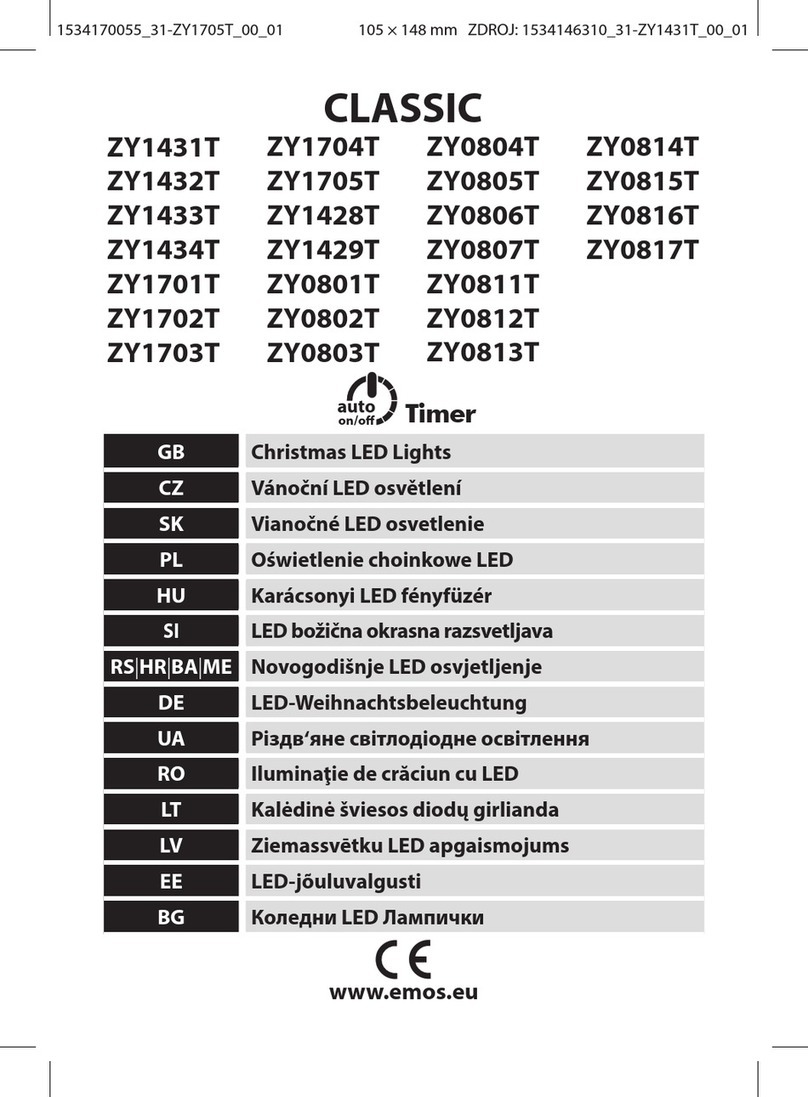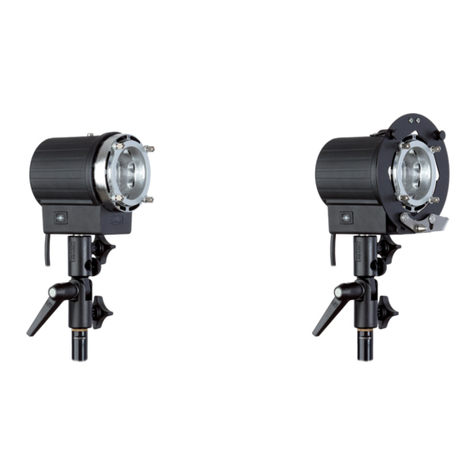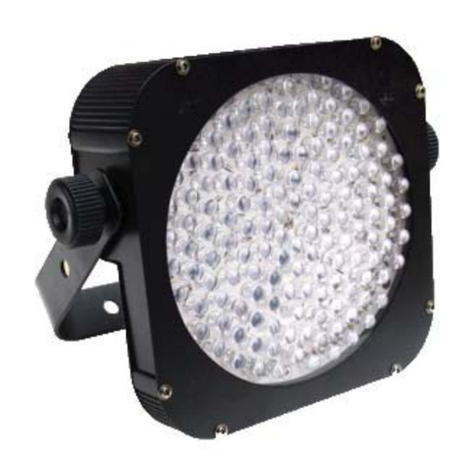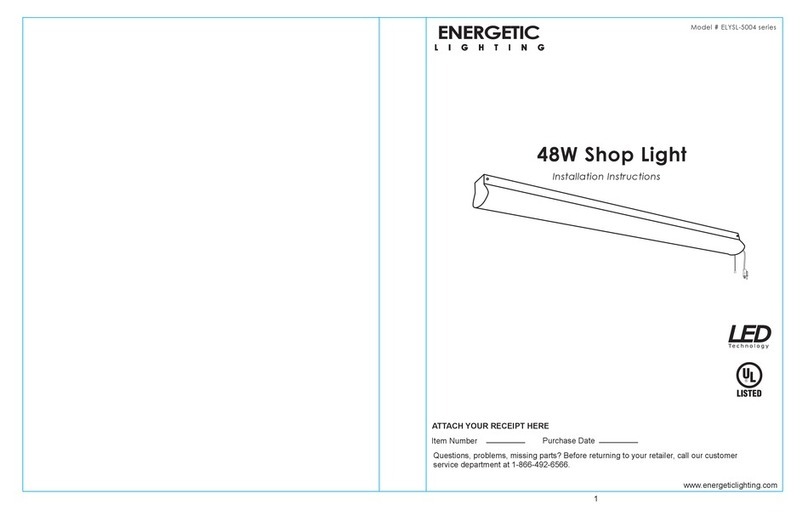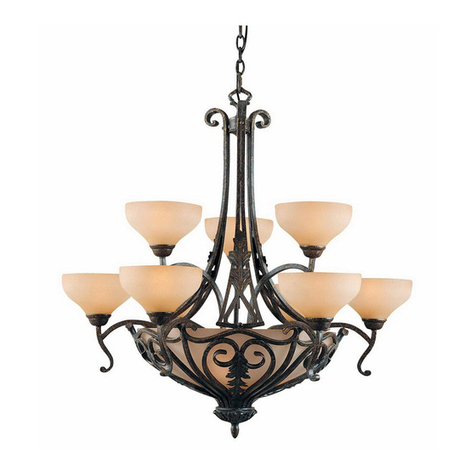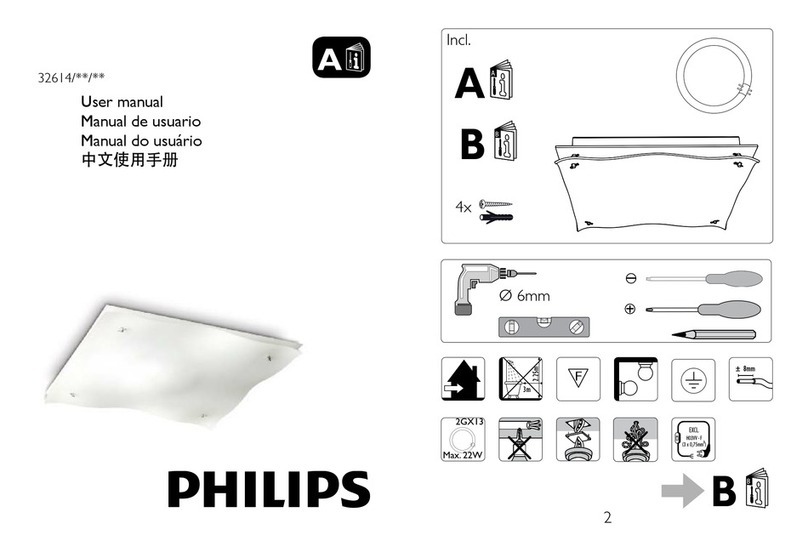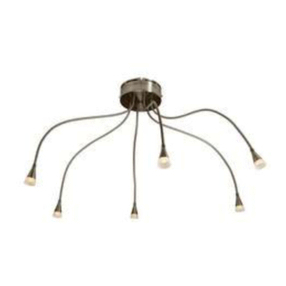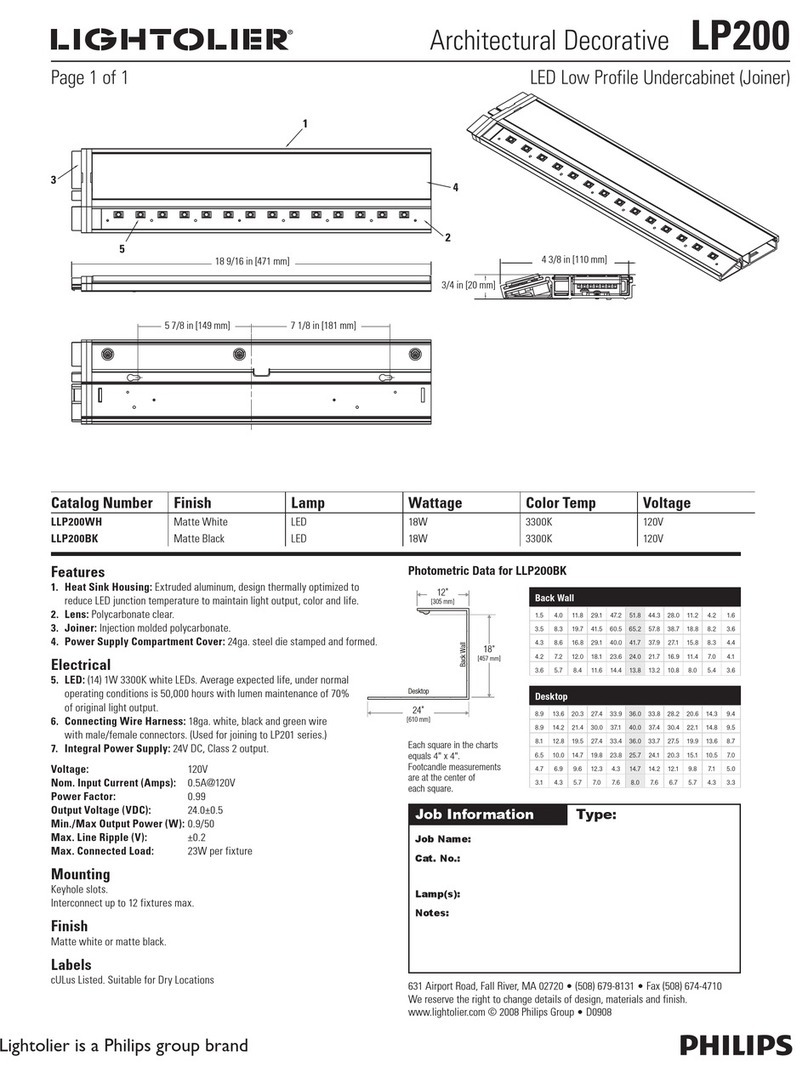2
Using the menu
• When not in the menu, the four digit display scrolls the
current DMX address and mode. The display’s right hand
decimal point (data dot) is used to indicate status (see below).
• Press to enter the menu. The four digit display will show ADDR.
• Use and to move between menu options (or to change a
value within an option).
• Press to enter an option (or to fix a changed value within an
option and return to the previous option level). Note: If you do
not press to fix a value, operation will revert to the
previously set mode at the next power on.
• Press to exit from a menu option (and eventually
exit the menu completely).
General notes
• Ensure that only one DMX
device in the chain is set
as master (e.g. the lighting
desk). This fixture is usually
set to slave mode.
• This fixture is shipped with
the DMX address set to
001.
• The four digit display can
be set to switch off when
not in use. To restore, press
. To alter this mode use:
PERS >DISP.
Menu operation
To optionally clear all previous settings: Press the
middle two buttons ( and ) while the current
address and mode are being displayed. The four digit
display will show FACT then SET to indicate that the
fixture has been returned to its default condition.
Chase effects
This section describes each of the 31 internal chase effects
that are selectable either via the control menu (prog >
c1/c2 > EFEC) or using DMX values sent from an exter-
nal source. To use the internal effects, set the mode option
either to ef m (to control effects via the menu) or EF d /
4+E (to control effects externally via DMX). See page 4 for
details about controlling effects on other fixtures via DMX
without using a control desk.
DMX EFEC Chase effect description
value value
0-7 00 Off
8-15 01 Rainbow chase forward
16-23 02 Rainbow chase reverse
24-31 03 10/90 duty cycle strobe white
32-39 04 10/90 duty cycle strobe white
40-47 05 10/90 duty cycle strobe white
48-55 06 50/50 duty cycle strobe white
56-63 07 50/50 duty cycle strobe red
64-71 08 50/50 duty cycle strobe blue
72-79 09 50/50 duty cycle strobe yellow
80-87 10 50/50 duty cycle strobe green
88-95 11 Pulse strobe white
96-103 12 Pulse strobe blue
104-111 13 Pulse strobe rainbow
112-119 14 Pulse strobe red/green/blue
120-127 15 Primary/secondary chase
128-135 16 Red/green/blue chase
136-143 17 Yellow/blue chase
144-151 18 Rainbow chase
152-159 19 Yellow/blue chase
160-167 20 Red/blue chase
168-175 21 Red/yellow chase
176-183 22 Red/green/blue chase
184-191 23 Green/purple chase
192-199 24 Red/green/blue chase
200-207 25 Static orange
208-215 26 Static yellow
216-223 27 Static light blue
224-231 28 Static purple
232-239 29 Static red
240-247 30 Static green
248-255 31 Static blue
Channel layouts within operation modes
The table below shows how colour mixing, chase effects and master intensity
controls are mapped to DMX channels for each mode. The dmx and16bt modes
do not use chase effects. In all modes, the first channel of the fixture occurs at the
DMX address selected using addr and successive channels for the fixture follow
from there.
Note: The PERS >RES option determines the number of channels to use in DMX
and16bt modes (16bt uses twice the number of channels setup within RES).
Channel dmX dmX 16bt) 16bt 4+E
(RES=3CH) (RES=4CH) (RES=3CH) (RES=4CH)
1 Red+Amber Red Red+Amber (course) Red (course) Red
2 Green Green Red+Amber (fine) Red (fine) Green
3 Blue Blue Green (course) Green (course) Blue
4 Master int.* Amber Green (fine) Green (fine) Amber
5 - Master int.* Blue (course) Blue (course) c1 Effect
6 - - Blue (fine) Blue (fine) c1 Speed
7 - - Master int.* Amber (course) c1 Xfade
8 - - - Amber (fine) c2 Effect
9 - - - Master int.* c2 Speed
10 - - - - c2 Xfade
11 - - - - Master int.
*Master intensity for dmx and16bt modes are available only when the
pers > mint option is set to on.
course = High channel for 16-bit, fine = Low channel for 16-bit
Dimming options
(PERS > DIMR)
You have a choice of dimmer
curve control options:
FINE is the standard setting
and is fully compatible with the
dimming curves of previous Pixel
Range fixtures.
TV uses dimming frequencies that
will eradicate any visible flicker
when viewed by video cameras
and broadcast systems.
TUNG Alters the dimming response
to closely emulate the very smooth
action of standard tungsten bulbs.
The TUNG setting can be used with
all operation modes. However,
within the effects modes (EF M,
4+E and EF D), the TUNG setting
will only be effective if the C1/C2
speed option is less than 25 and
the C1/C2 XFADE option is less
than 127.

